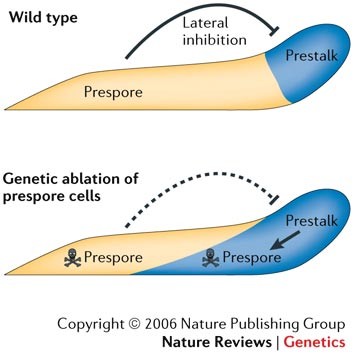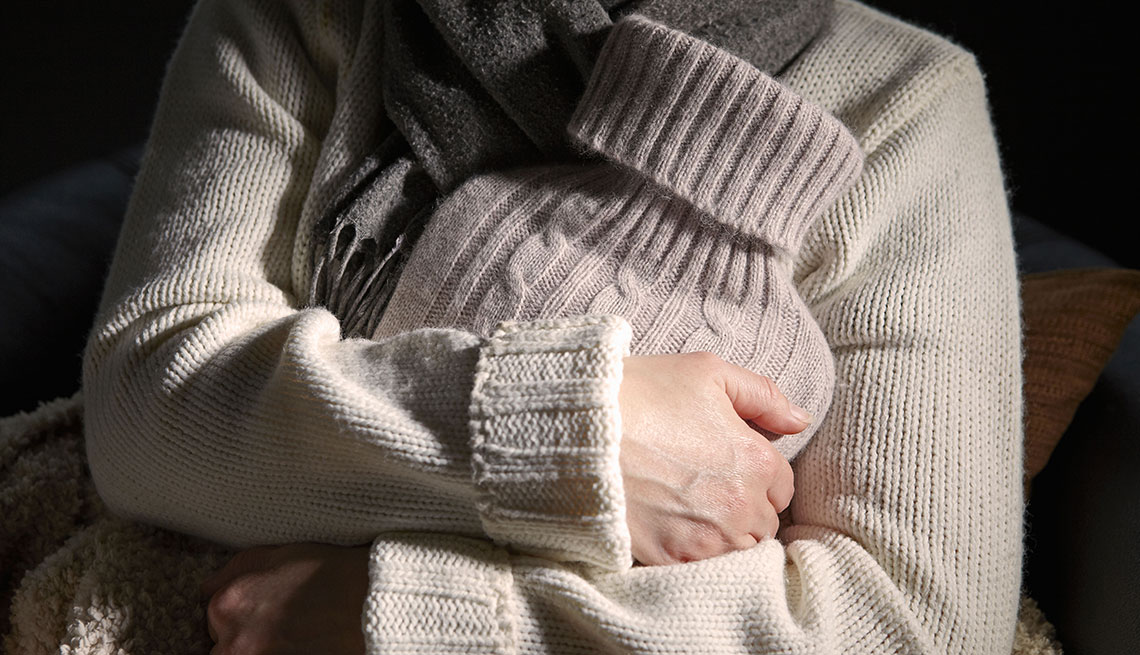- Select a language for the TTS:
- UK English Female
- UK English Male
- US English Female
- US English Male
- Australian Female
- Australian Male
- Language selected: (auto detect) - EN
Play all audios:
ABSTRACT OBJECTIVE: To clarify the incidence and characteristics of spinal cord concussion in an urban city in Japan. METHODS: The current retrospective study was conducted by reviewing the
medical records of patients with spinal cord injuries admitted between January 2007 and December 2010. The subjects were divided into two groups: a spinal cord concussion group and a spinal
cord injury group. RESULTS: There were 36 patients with spinal cord injuries admitted during this period. Among them, there were 8 patients with spinal cord concussions. No significant
differences were apparent between the two groups with regard to sex, mechanism of injury, Glasgow Coma Scale, incidence of shock, inhospital Frankel classification, level of spinal cord
injury, frequency of vertebral dislocation/fracture, surgery and the survival rate. However, the mean age in the spinal cord concussion group was lower than that in the spinal cord injury
group. The systolic blood pressure, the heart rate and the diameter of minimum spinal canal in the concussion group were all higher than those in the spinal cord injury group. Half of the
subjects in the spinal cord concussion group demonstrated immediate neurological improvement between prehospital and inhospital findings, however none of the subjects in the spinal cord
injury group demonstrated such improvement. This difference was statistically significant. CONCLUSION: Spinal cord concussion is not rare in urban Japan. Checking neurological findings at
the scene leads to the revelation of the true high incidence of spinal cord concussion among spinal cord injuries. SIMILAR CONTENT BEING VIEWED BY OTHERS THE CHANGING DEMOGRAPHICS OF
TRAUMATIC SPINAL CORD INJURY IN BEIJING, CHINA: A SINGLE-CENTRE REPORT OF 2448 CASES OVER 7 YEARS Article 13 October 2020 NEUROLOGICAL RECOVERY AFTER TRAUMATIC SPINAL CORD INJURY: PROGNOSTIC
VALUE OF MAGNETIC RESONANCE Article 01 February 2022 CAUSES OF DEATH AFTER SPINAL CORD INJURY IN THE CZECH REPUBLIC Article 14 January 2021 INTRODUCTION A spinal cord concussion is an
injury that causes transient paralysis and/or sensory disturbance, subsiding within 2 or 3 days.1, 2 Del Bigio _et al._1 reported that spinal cord concussion represented 6% of all spinal
cord injuries. Because of its rare incidence, there have been few reports concerning spinal cord concussion in English literatures and no reports in Japanese.1, 2, 3, 4, 5, 6 Previous
reports of spinal cord concussion conclude that sports and falls were the leading cause of the injury, and that the most common site affected was the cervical or thoraco–lumbar junction
among young subjects. There was controversy whether pre-existing abnormalities of the spine, such as spinal canal stenosis, can be a risk factor for the occurrence of spinal cord
concussion.2, 3, 4, 5, 6, 7, 8 We therefore investigated the incidence and characteristics of spinal cord concussion at our institute in an urban setting in Japan. PATIENTS AND METHODS This
retrospective study protocol was approved by our institutional review board, and examinations were conducted according to the standards of good clinical practice and the Helsinki
Declaration. The current study was conducted by reviewing the medical records of patients with spinal cord injuries admitted to our institution between January 2007 and December 2010 at the
National Defense Medical College, located in the suburban area of Tokyo, with a neighboring population of approximately 800 000 people. The definition of spinal cord concussion was
‘transient paralysis and/or sensory disturbance, subsiding within 72 h’. The subjects were divided into two groups: a spinal cord concussion group and a spinal cord injury group. The
following variables were analyzed between groups: age, sex; mechanism of injury (fall, traffic accident or violence), Glasgow Coma Scale on arrival, systolic blood pressure, heart rate,
respiratory rate, incidence of shock, Frankel classification at prehospital and inhospital examination, the level of spinal cord injury, diameter of the spinal canal, existence of spinal
canal stenosis, vertebral dislocation/fracture, traumatic lesion at spinal cord detected by magnetic resonance imaging, steroid use, surgical treatment and the survival rate. Statistical
analysis was performed using Student's unpaired _t-_test and the contingency table analyses. Differences with values of _P_<0.05 were considered statistically significant. RESULTS
During the investigation period, a total of 746 blunt traumatized patients were admitted to our institution. There were 36 patients with a spinal cord injury. Among these, there were 8
patients with spinal cord concussions. The results of the comparisons between the groups are shown in Table 1, and details of the spinal cord concussion patients appear in Table 2. No
significant differences were apparent between the two groups with regard to sex, mechanism of injury, Glasgow Coma Scale, incidence of shock, Frankel classification, level of spinal cord
injury, frequency of vertebral dislocation/fracture, surgical treatment and the survival rate. However, the age and frequency of steroid use in the spinal cord concussion group were lower
than those in the spinal cord injury group. The systolic blood pressure, the heart rate and the minimum diameter of the spinal canal were higher than those in the spinal cord injury group.
Half of the subjects in the spinal cord concussion group demonstrated immediate neurological improvement between prehospital and inhospital findings, however none of subjects in the spinal
cord injury group demonstrated such improvement. None of the subjects in the spinal cord concussion group (_n_=5), who underwent the magnetic resonance imaging study, had traumatic lesions
in the spinal cord, however, 22 of the 25 (88%) subjects in the spinal cord injury group showed spinal cord lesions that were detected by magnetic resonance imaging. These differences were
statistically significant. In the spinal cord concussion group, there were two cases of primary spinal canal stenosis, one cervical disc herniation and one thoraco-lumbar fracture. The cases
with disc herniation and burst fracture did not acquire secondary spinal canal stenosis. Four subjects in the spinal cord concussion group had normal radiological findings. DISCUSSION This
study demonstrated that spinal cord concussion is not that rare in urban Japan. In addition, patients with spinal cord concussion tended to demonstrate immediate neurological improvement
without their vital signs being affected by the vagus nerve. The incidence of spinal cord concussion among patients with a spinal cord injury in the present study (22%) was higher than Del
Bigio's report (6%).1 One of the reasons for these differences may have been differences in prehospital management. For example, some cases with spinal cord concussion were not
transferred to a specialized unit. In Japan, there is a JPTEC (Japan prehospital trauma evaluation and care) course that has been centralized under the Japanese Association for Acute
Medicine, and the JPTEC council popularized the standard trauma care programs for emergency medical technicians (EMTs) in 2003.9 The JPTEC educates EMTs to check patients for paralysis and
sensory disturbance, and if the patient was suspected of suffering from a spinal cord injury, then the EMTs were to transport the patients to a level-1 trauma center. Based on the education
of the Japanese EMTs, there may have been an increase in the number of spinal cord concussions admitted among the other spinal cord injuries, whereas such patients might have spontaneously
resolved when they were admitted to other centers prior to receiving a formal diagnosis of spinal cord concussion. We have treated approximately 9000 patients with clinical emergencies,
including trauma, since 1980. However, we did not diagnose any patients with a spinal cord concussion before 2003. This fact supports our hypothesis. The neurological changes caused by
trauma during the acute phase can vary, and are difficult to assess precisely, especially with regard to sensory disturbance, which cannot be evaluated objectively. In addition, most of the
patients with spinal cord concussion in this study demonstrated motor weakness, so that recovery of the extremity was simple to evaluate by manual muscle tests, which is in contrast to
assessment of sensory disturbance. Scher _et al._7 reported a study of rugby players with spinal cord concussion. Their study also indicated a higher frequency of spinal cord concussion
among spinal cord injuries (22%), similar to the present study. In addition, Del Bigio _et al._1 reported that they experienced four cases with immediate complete recovery of paralysis
within 10 min, which usually disappeared in the prehospital setting. Accordingly, checking neurological findings at the scene leads to the revelation of the true high incidence of spinal
cord concussion among spinal cord injuries. As some patients with spinal cord concussion can experience a subsidence of symptoms within a few minutes, even EMTs may not see evidence of the
neurological abnormality. Thus, the reports provided by those providing first aid or ordinary witnesses may be helpful for evaluating a case with rapid improvement of paralysis due to spinal
cord concussion. However, we could not find any official documents describing such patients. In the present study, there were no patients who demonstrated neurogenic shock in the spinal
cord concussion group. In patients with cervical cord injury, bradycardia and hypotension may occur due to suppression of the sympathetic tone following predominance of the vagus.10, 11 The
autonomic nervous system regulates many different target tissues in the somatic and visceral domains of the body in a differentiated manner, indicating that there apparently exist separate
sympathetic pathways that are functionally defined by their target cells.12 Most of the actions of the autonomic nervous system are involuntary, whereas some activities, such as breathing,
can also be controlled by conscious patients.13 However, bradycardia or hypotension tended to be reproducible reactions to vagus stimulation, even in patients with spinal cord injury.14, 15
Neurogenic shock tended to occur more frequently in patients with complete cervical cord injury in comparison with those with incomplete or spinal cord injury without a cervical lesion.11
The spinal cord concussion is different from complete spinal cord injury, so patients with a spinal cord concussion do not generally demonstrate neurogenic shock. However, animal studies
have shown that severe concussion can cause death via profound autonomic dysfunction, without leaving anatomical evidence of injury, and there was a rare clinical case who may have died due
to a vasovagal stimulus after blunt trauma.16, 17 In patients with a cerebral concussion, electrical, chemical, or ultrastructural changes that likely occur in neurons have yet to be
identified.1, 17 Parkinson speculated that interruption of neural function at the synaptic level may be a feature of concussion.18 Comparatively little is known about spinal cord concussion
due to the lack of a suitable experimental model.2 There were some hypotheses about the mechanism of spinal cord concussion. For example, transient subtle contact with ultrastructural
changes between the spinal cord and spinal column may cause spinal cord concussion. Transient contact may be induced by primary or secondary spinal canal stenosis, relaxation of the ligament
of the spinal column,8 and/or hyperextensive motion that causes the posterior longitudinal ligament and the ligamentum flavum to thicken, the dural diameter to decrease in size and the
diameter of the spinal cord to increase in size.4 There was also a report suggesting that compression of the spinal cord during hyperextension by infolding of the laminar ligaments resulted
in narrowing of the spinal canal.7 Groat _et al._19 emphasized the possibility of a functional block of neural activity. In addition, as transient ischemia causes transient neurological
deficits, transient hypoperfusion of the spinal artery may cause a spinal cord concussion.20 CONCLUSION The frequency of spinal cord concussion was not rare in the present study. Checking
neurological findings at the scene leads to the revelation of the true high incidence of spinal cord concussion among spinal cord injuries. REFERENCES * Del Bigio MR, Johnson GE . Clinical
presentation of spinal cord concussion. _Spine_ 1989; 14: 37–40. Article CAS Google Scholar * Zwimpfer TJ, Bernstein M . Spinal cord concussion. _J Neurosurg_ 1990; 72: 894–900. Article
CAS Google Scholar * Liao CC, Lui TN, Chen LR, Chuang CC, Huang YC . Spinal cord injury without radiological abnormality in preschool-aged children: correlation of magnetic resonance
imaging findings with neurological outcomes. _J Neurosurg_ 2005; 103 (1 Suppl): 17–23. PubMed Google Scholar * Scher AT . Spinal cord concussion in rugby players. _Am J Sports Med_ 1991;
19: 485–488. Article CAS Google Scholar * Rathbone D, Johnson G, Letts M . Spinal cord concussion in pediatric athletes. _J Pediatr Orthop_ 1992; 12: 616–620. Article CAS Google Scholar
* Torg JS, Pavlov H, Genuario SE, Sennett B, Wisneski RJ, Robie BH _et al_. Neurapraxia of the cervical spinal cord with transient quadriplegia. _J Bone Joint Surg_ 1986; 68: 1354–1370.
Article CAS Google Scholar * Scher AT . Rugby injuries to the cervical spine and spinal cord: a 10-year review. _Clin Sports Med_ 1998; 17: 195–206. Article CAS Google Scholar *
Ferrera PC, Hayes ST, Triner WR . Spinal cord concussion in previously undiagnosed osteogenesis imperfecta. _Am J Emerg Med_ 1995; 13: 424–426. Article CAS Google Scholar * Mashiko K .
Trauma systems in Japan: history, present status and future perspectives. _J Nippon Med Sch_ 2005; 72: 194–202. Article Google Scholar * Bilello JF, Davis JW, Cunningham JA, Groom TF,
Lemaster D, Sue LP . Cervical spinal cord injury and the need for cardiovascular intervention. _Arch Surg_ 2003; 138: 1127–1129. Article Google Scholar * Ploumis A, Yadlapalli N, Fehlings
MG, Kwon BK, Vaccaro AR . A systemic review of the evidence supporting a role for vasopressor support in acute SCI. _Spinal Cord_ 2010; 48: 356–362. Article CAS Google Scholar * Jänig W,
Häbler HJ . Neurophysiological analysis of target-related sympathetic pathways—from animal to human: similarities and differences. _Acta Physiol Scand_ 2003; 177: 255–274. Article Google
Scholar * Mayo KR . Support from neurobiology for spiritual techniques for anxiety: a brief review. _J Health Care Chaplain_ 2009; 16: 53–57. Article Google Scholar * Takahashi M,
Matsukawa K, Nakamoto T, Tsuchimochi H, Sakaguchi A, Kawaguchi K _et al_. Control of heart rate variability by cardiac parasympathetic nerve activity during voluntary static exercise in
humans with tetraplegia. _J Appl Physiol_ 2007; 103: 1669–1677. Article Google Scholar * van Lieshout JJ, Wieling W, Karemaker JM, Eckberg DL . The vasovagal response. _Clin Sci_ 1991; 81:
575–586. Article CAS Google Scholar * Davis GG, Glass JM . Case report of sudden death after a blow to the back of the neck. _Am J Forensic Med Pathol_ 2001; 22: 13–18. Article CAS
Google Scholar * Taylor AR . The mechanism of injury to the spinal cord in the neck without damage to the vertebral column. _J Bone Joint Surg_ 1951; 33B: 543–547. Article Google Scholar
* Parkinson D . The biomechanics of concussion. _Clin Neurosurg_ 1982; 29: 131–145. Article CAS Google Scholar * Groat RA, Rambach Jr WA, Windle WF . Concussion of the spinal cord. An
experimental study and a critique of the use of the term. _Surg Gynecol Obstet_ 1945; 81: 63–74. Google Scholar * Mulligan JM, Miller T, McGuffie AC, Graham CA . Spinal cord injury without
radiographic abnormality in a 4-year-old child: hypoperfusion injury or direct trauma? _Eur J Emerg Med_ 2007; 14: 216–218. Article Google Scholar Download references AUTHOR INFORMATION
AUTHORS AND AFFILIATIONS * Department of Traumatology and Critical Care Medicine, National Defense Medical College, Saitama, Japan Y Yanagawa & H Miyawaki Authors * Y Yanagawa View
author publications You can also search for this author inPubMed Google Scholar * H Miyawaki View author publications You can also search for this author inPubMed Google Scholar
CORRESPONDING AUTHOR Correspondence to Y Yanagawa. ETHICS DECLARATIONS COMPETING INTERESTS The authors declare no conflict of interest. RIGHTS AND PERMISSIONS Reprints and permissions ABOUT
THIS ARTICLE CITE THIS ARTICLE Yanagawa, Y., Miyawaki, H. Importance of checking prehospital neurological findings to reveal incidence of spinal cord concussion. _Spinal Cord_ 50, 278–280
(2012). https://doi.org/10.1038/sc.2011.151 Download citation * Received: 18 December 2010 * Revised: 26 September 2011 * Accepted: 07 November 2011 * Published: 17 January 2012 * Issue
Date: April 2012 * DOI: https://doi.org/10.1038/sc.2011.151 SHARE THIS ARTICLE Anyone you share the following link with will be able to read this content: Get shareable link Sorry, a
shareable link is not currently available for this article. Copy to clipboard Provided by the Springer Nature SharedIt content-sharing initiative KEYWORDS * spinal cord concussion * spinal
cord injury * prehospital care







